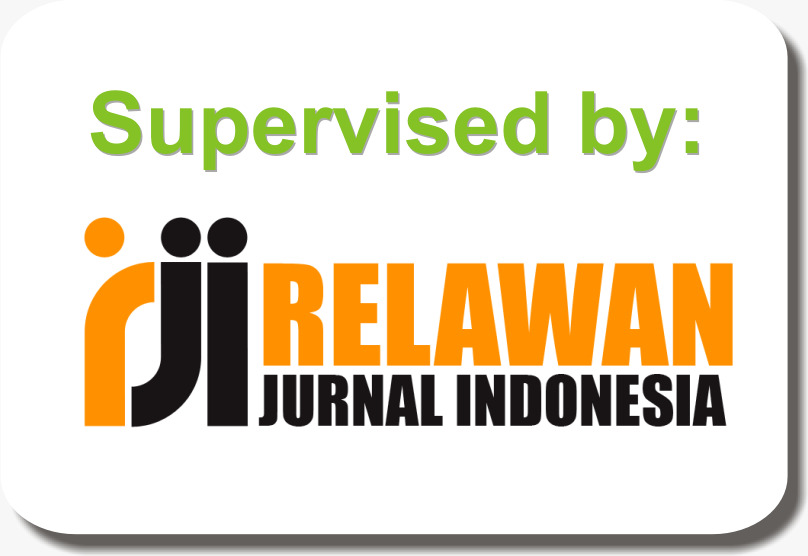Diagnostic Skill of Internalization-Interconnection Qur’ani With Science in Three Levels of Madrasah
DOI:
https://doi.org/10.21154/cendekia.v18i2.2178Keywords:
Diagnostic, mix method, internalized, interconnected, Qur’aniAbstract
The study diagnosed the skill of internalization-interconnection of the Qur’ani with science at the three levels of Madrasah (Islamic school). We used a mixed-method research methodology, which was started with a cross-sectional survey, then continued with phenomenology. With this combination of research, it is hoped that more comprehensive data results will be obtained. The number of participants involved in the survey was 116 people taken randomly at three levels of the madrasah, who were then purposively classified based on the highest score for in-depth interviews. The collected data were analyzed using quantitative descriptive, qualitative descriptive, and inferential statistics through multivariate tests. The results of the present study show that: 1) the theoanthopocentric approach had been implemented quite well since the MI (Islamic Elementary School) level; 2) MTs (Islamic Junior High School) is the best level for optimizing the planting of the skill to internalize-interconnect Qur’ani with science; 3) the profile of students’ internalization skills in the MI is at the knowing level, MTs is in the responding level, and at the MA (Islamic Senior High School)in the organizing level, while the interconnection skill at the MI is in the understanding in textual level (textual), the MTs in the level of understanding contextually only on the initial experience of students (effective contextual) and MA in the level of understanding analyzes the relationship between science and other subjects as well as with the verses of the Qur’an in a structured manner (structured contextual).
Tujuan penelitian adalah untuk mendiagnosa kemampuan internalisasi-intekoneksi Qur’ani dengan IPA di tiga jenjang pendidikan madrasah. Penelitian dilakukan melalui mix-method atau metode kombinasi yang diawali dengan cross sectional survey kemudian dilanjutkan dengan fenomenologi. Dengan penelitian kombinasi ini diharapkan mendapatkan hasil data yang lebih komprehensif. Jumlah partisipan yang terlibat dalam survey sebanyak 116 orang diambil secara random di tiga jenjang madrasah, yang kemudian dikrucutkan secara purpossive berdasarkan nilai tertinggi untuk diwawancarai secara mendalam. Data yang telah terkumpul kemudian dianalisa menggunakan deskriptif kuantitatif, deskriptif kualitatif, serta statistik inferensial melalui uji multivariat. Hasil penelitian menunjukkan bahwa: 1) pendekatan theoanthopocentris telah dilaksanakan secara cukup baik sejak jenjang MI; 2) jenjang MTs merupakan jenjang paling baik untuk untuk optimalisasi penanaman kemampuan internalisasi-interkoneksi al-Qur’an dengan IPA; 3) Profil keterampilan internalisasi siswa di MI ada di tingkat mengetahui, MTs di tingkat menanggapi, dan di MA di tingkat pengorganisasian, sedangkan keterampilan interkoneksi di MI ada di tingkat pemahaman pada tataran tekstual (tekstual), MTs pada tataran pemahaman kontekstual hanya pada pengalaman awal peserta didik (kontekstual efektif) dan MA pada tataran pemahaman menganalisis hubungan IPA dengan mata pelajaran lain serta dengan ayat-ayat al-quran secara terstruktur (kontekstual terstruktur)
Downloads
Published
Issue
Section
License
Copyright & License
Please find the rights and licenses in Cendekia: Jurnal Kependidikan dan Kemasyarakatan. By submitting the article/manuscript, the author(s) agree with this policy. No specific document sign-off is required.
1. License
The non-commercial use of the article will be governed by the Creative Commons Attribution license as currently displayed on the Creative Commons Attribution-NonCommercial 4.0 International License.
2. Author(s)' Warranties
The author warrants that the article is original, written by the stated author(s), has not been published before, contains no unlawful statements, does not infringe the rights of others, is subject to copyright that is vested exclusively in the author and free of any third party rights, and that any necessary written permissions to quote from other sources have been obtained by the author(s).
3. User/Public Rights
The spirit of Cendekia: Jurnal Kependidikan dan Kemasyarakatan is to disseminate articles published as free as possible. Under the Creative Commons license, Cendekia: Jurnal Kependidikan dan Kemasyarakatan permits users to copy, distribute, display, and perform the work for non-commercial purposes. Users will also need to attribute authors and Cendekia: Jurnal Kependidikan dan Kemasyarakatan on distributing works in the journal and other media of publications. Unless otherwise stated, the authors are public entities as soon as their articles got published.
4. Rights of Authors
Authors retain all their rights to the published works, such as (but not limited to) the following rights;
- Copyright and other proprietary rights relating to the article, such as patent rights,
- The right to use the substance of the article in own future works, including lectures and books,
- The right to reproduce the article for own purposes,
- The right to self-archive the article,
- The right to enter into separate, additional contractual arrangements for the non-exclusive distribution of the article's published version (e.g., post it to an institutional repository or publish it in a book), with an acknowledgment of its initial publication in this journal (Cendekia: Jurnal Kependidikan dan Kemasyarakatan).
5. Co-Authorship
If the article was jointly prepared by more than one author, any author submitting the manuscript warrants that he/she has been authorized by all co-authors to be agreed on this copyright and license notice (agreement) on their behalf and agrees to inform his/her co-authors of the terms of this policy. Cendekia: Jurnal Kependidikan dan Kemasyarakatan will not be held liable for anything arising due to the author(s) internal dispute. Cendekia: Jurnal Kependidikan dan Kemasyarakatan will only communicate with the corresponding author.
6. Royalties
Being an open accessed journal and disseminating articles for free under the Creative Commons license term mentioned, the author(s) are aware that Cendekia: Jurnal Kependidikan dan Kemasyarakatan entitles the author(s) to no royalties or other fees.
7. Miscellaneous
Cendekia: Jurnal Kependidikan dan Kemasyarakatan will publish the article (or have it published) in the journal if the article's editorial process is completed. The editors of Cendekia: Jurnal Kependidikan dan Kemasyarakatan may modify the paper to a style of punctuation, spelling, capitalization, referencing, and usage that deems appropriate. The author acknowledges that the article may be published so that it will be publicly accessible, and such access will be free of charge for the readers, as mentioned in point 3.

















